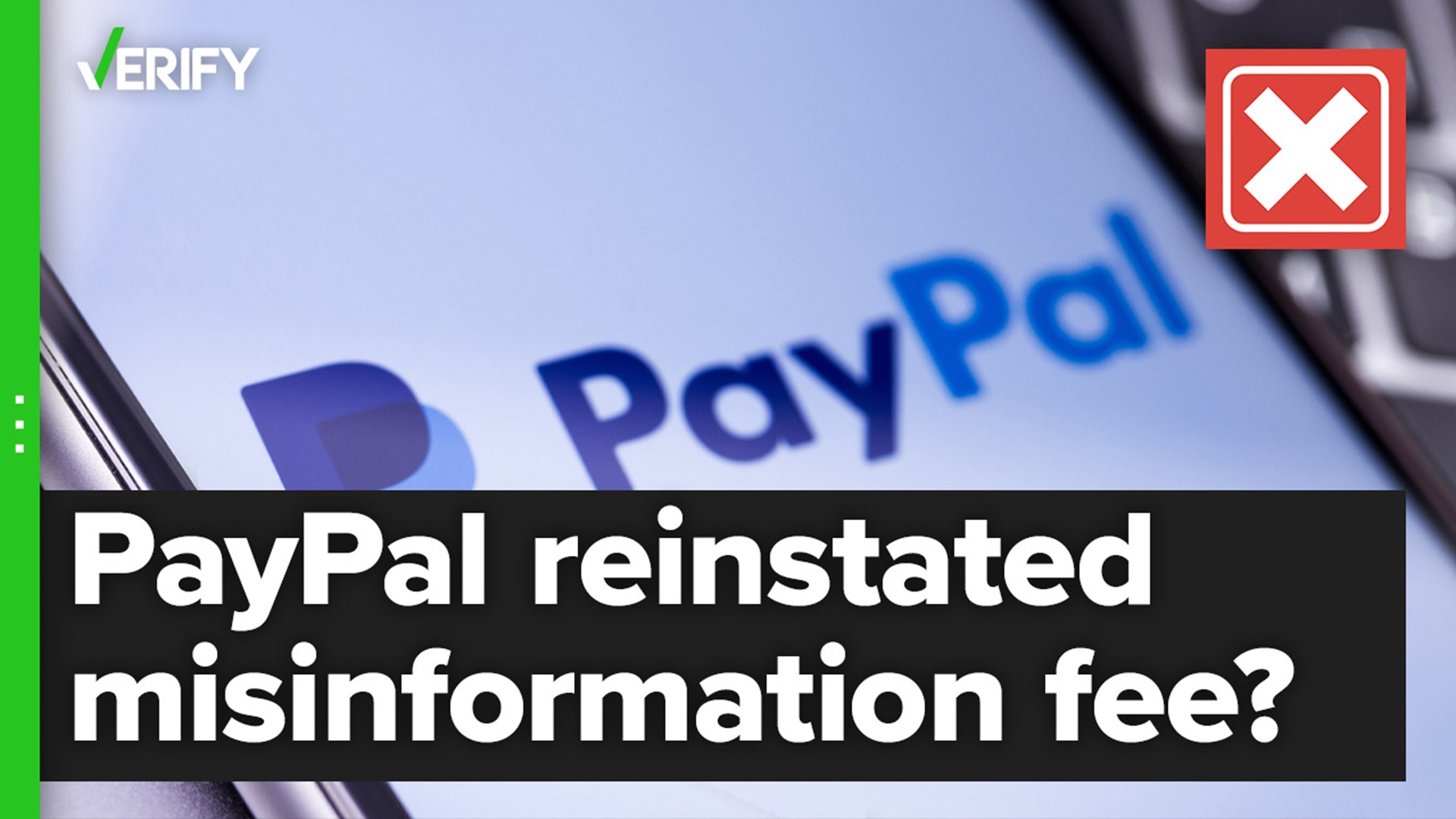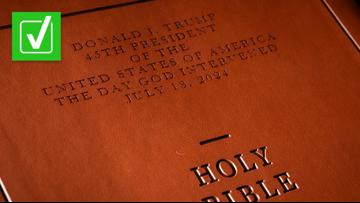In early October, PayPal was criticized on social media after a document that was posted on the payment company’s website stated that spreading misinformation was a violation of its Acceptable Use Policy and could result in $2,500 in damages. After the document went viral, #boycottpaypal and #byebyepaypal trended on Twitter.
VERIFY reached out to PayPal about the new policy prohibiting the spread of misinformation, and in a statement, a PayPal spokesperson said the document, which was dated Nov. 3, 2022, “went out in error” and “included incorrect information” about misinformation.
“PayPal is not fining people for misinformation and this language was never intended to be inserted in our policy. We’re sorry for the confusion this has caused,” the spokesperson told VERIFY.
Weeks later, new claims are going viral on social media, alleging again that PayPal reinstated the misinformation clause back into its company policies, along with the $2,500 fine, as soon as the previous criticism died down.
THE QUESTION
Did PayPal reinstate a $2,500 fine for spreading misinformation?
THE SOURCES
- The Wayback Machine, a digital archive tool
- PayPal User Agreement
- A PayPal spokesperson
THE ANSWER
No, PayPal did not reinstate a $2,500 fine for spreading misinformation. The user agreement has had policies that prohibit providing “misleading information” in connection with the platform as well as language outlining its right to assess $2,500 in damages for violations since 2015.
WHAT WE FOUND
The viral posts claim PayPal allegedly made a recent change to its user agreement to include new rules against sharing misleading information, but VERIFY found those policies have been in place for years.
Using The Wayback Machine, a digital archive tool, VERIFY found that PayPal’s user agreement has included policies that prohibit providing “misleading information” in connection with the platform, as well as language that outlines the company’s right to assess $2,500 in damages for violations of its policies, since at least 2015. The word “misinformation” does not appear in the user agreement.
In a statement, a PayPal spokesperson told VERIFY that the company’s policies are not new, “nor has the intent of this provision changed.” The company’s current user agreement was last updated on Sept. 19, 2022, more than a month before these claims spread online.
When asked about the $2,500 fine mentioned in some of the new viral claims, the spokesperson said PayPal does not fine customers for violating its Acceptable Use Policy, which is a sub-policy included in the company’s user agreement.
More from VERIFY: Signing the back of your credit card is not a significant security risk
PayPal’s Acceptable Use Policy is used to help protect customers and its payments platform against illicit and fraudulent activity from sellers who receive funds for transactions, according to the spokesperson.
“In some situations, sellers may be liable for damages associated with investigatory costs when they engage in activities that violate the company’s policy, like fraud, counterfeiting or other illegal activity,” the spokesperson said.
If a seller violates PayPal’s terms, they may be subjected to $2,500 in damages, according to language found in the user agreement:
If you are a seller and receive funds for transactions that violate the Acceptable Use Policy, then in addition to being subject to the above actions you will be liable to PayPal for the amount of PayPal’s damages caused by your violation of the Acceptable Use Policy. You acknowledge and agree that $2,500.00 U.S. dollars per violation of the Acceptable Use Policy is presently a reasonable minimum estimate of PayPal’s actual damages.
VERIFY also looked into user agreements at other payment companies, including Square and its subsidiary CashApp, and found that their policies also include language that prohibits false, misleading and deceptive activity on their platforms.
More from VERIFY: 6 ways to spot a mobile payment app scam












